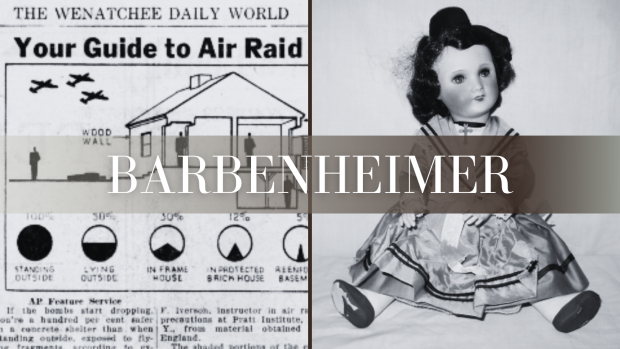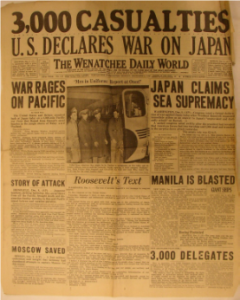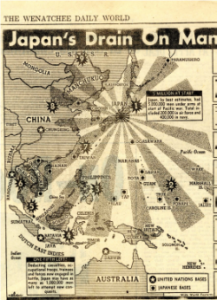Oppenheimer: A Look Back into Wenatchee During WWII
Note: This is not an exhibit within the museum. These photos are not currently available for viewing within the museum, but only for these blog posts.
In light of the upcoming Oppenheimer premiere on July 21, the Wenatchee Valley Museum and Cultural Center are sharing photo copies of some of our collection items that detail WWII within the valley.
In December 1941, the United States announced they were at war with Japan following their attack on the American naval base Pearl Harbor in Hawaii. This attack and Germany declaring war against the U.S. thrust the United States into WWII.
The war affected everyone within the country, and Wenatchee Valley residents were no exception. Families received war rations of sugar, meat, coffee, butter, canned goods, tires, and shoes, all deemed critical for the war effort.

83-19-4: World War II ration book, issued in 1943 to Lawrence Dallam.
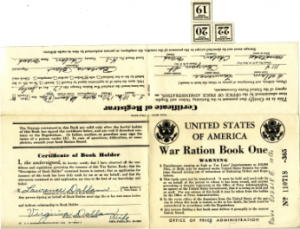
83-19-1: World War Two Ration book, issued on July 17, 1942. to Lawrence Dallam. WWII.
In 1942, American scientists began work on the Manhattan Project, where they developed the first atomic bomb at Los Alamos, New Mexico.
The atomic bomb detonates by splitting the nuclei of elements like plutonium or uranium.
Scientists detonated this massive fission bomb in the New Mexico desert, marking it a success. The U.S. government ordered Japanese officials to surrender, which they refused.
Then on August 6-9, 1945, the U.S. Army Air Force dropped an atomic bomb on Hiroshima and another on Nagasaki, killing at least 120,000 Japanese civilians.
News of what happened in Japan plunged the world into fear over potential atomic warfare. Even before these nuclear bomb drops, American citizens were prepping their homes in case of an incoming air raid from either Japan or Germany.
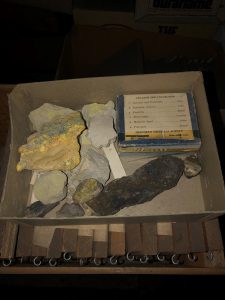
51-20-(1, 2, and 3), 55-49-11, and 56-43-1: Sample of Uranium ore (uraninite and autunite). The small black square crystals are uraninite.
Shortly after the overwhelming loss of life in Hiroshima and Nagasaki, Japan surrendered to the U.S., Great Britain, and the Soviet Union. American soldiers witnessed the official surrender on September 2, 1945, including future Wenatchee resident and then 19-year-old Edwin Smith Asimakoupoulos, who served on the U.S.S. Missouri.
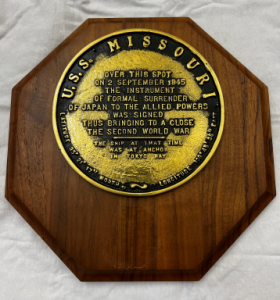
2021-11-1: Photographed above is a replica plaque belonging to Edwin Smith Asimakoupoulos, who was a 19-year-old witness to the surrender ceremony of WWII.
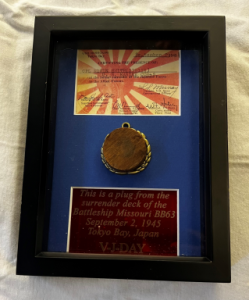
2021-11-3: Framed certificate and plug from the Battleship Missouri belonging to Edwin Smith Asimakoupoulos who was a 19-year-old witness to the surrender ceremony of WWII on September 2, 1945.
This is a plug from the surrender deck of the Battleship Missouri BB63, September 2, 1945, Tokyo Bay, Japan, V-J-Day.
Photograph and Digital Image © Wenatchee Valley Museum and Cultural Center. Not for reproduction or publication.

